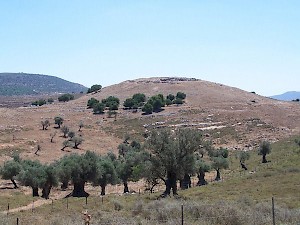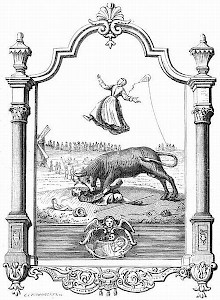The baby of Jotapata

The Jewish War by Flavius Josephus (37-c.100) is our most important source for the study of the conflict mentioned in the title, which started in 66 and culminated in the destruction of the Temple in Jerusalem, four years later. Except for some evidence from rabbinical sources and a few scraps in the works of Tacitus, Suetonius, and Cassius Dio, Josephus' work is in fact our only source. Unfortunately, the author is capable of deliberately misleading his readers, and the reliability of the story is now the subject of many articles by ancient hirstorians. Here is an anecdote that has been branded as unreliable:
Anyone may learn the force of the ballistas by what happened this very night [...]: a pregnant woman had her belly so violently struck, as she was just come out of her house, that the infant was carried to the distance of half a furlong, so great was the force of that engine.note
There are strong reasons to have some doubts. An airborne delivery does not really look like a plausible story. Besides, the fate of babies is often mentioned in texts when readers are supposed to feel compassion and indignation. A notorious example is the Medieval story that Jews ate Christian babies during the Passover meal (an accusation that has been given a new life in twentieth-century Antizionist propaganda). And there's the story that Iraqi soldiers had destroyed the incubators in a hospital in Kuwait City - which later turned out to be untrue. So, at first sight, this story might be discarded as a propagandistic topos.

However, it is possible that it is true after all. Here is the text of an inscription from the Westzijderkerk (West Side Church) in Zaandam, a city in Holland near Amsterdam:
On the 29th of August 1647, Jacob Eg and Trijn Jans, a couple from the Westzaandam and Zeeburg quarter, were attacked, hit and maltreated by an angry bull [...] and died [...]. Both were buried in the New Church, in this town. Trijn Jans was in the final days of her pregnancy. She was lifted up on the horns of the bull, thrown up, and her belly and hip were cut open, and the baby was thrown out of her body through this hole. The baby and the mother fell in a pool of water [...] separated by about twenty meters. The boy was baptized and called Jacob, but died on the 23d of May 1648, and was buried with his parents.
Here we have more or less the same story about a baby born in mid-air. The pregnant woman is violently hit and her child is thrown out of the womb. The difference, however, is that there is no reason to deny that it is a historical fact. There used to be a painting in the church (removed in 1834), which is still nicknamed "Church of the bull", and the story was quite famous in the Dutch republic. Today, there's a statue. Whatever one thinks of the topicality of Josephus' horror tale, it is within the realm of the possible.
Literature
- Anonymous, "De Zaan en Waterland. Een kijkje in Noord Holland", in: De Aarde en haar Volken. Geïllustreerd Volksboek 23 (1887), page 8 (online edition)
Dutch text
Op den 29 Augustus 1647, zijn Jacob Eg en Trijn Jans, echte man en wijf, woonende in 't quartier van Westsardam en den Zeeburg, door de verwoedheydt van haar eigen roode stier, dewelke in 't veld agter haar huys van 't zeel losgeraakt was, in zulker voege aangerand, gestooten en gescheurd, dat zij beyde daarvan zijn komen te overlijden, op den laatsten Augustus deszelven jaars, namelijk de voorz. Trijn Jans vijf uren tijds na haren man, zijnde beyde ter aarde besteld in de Nieuwe kerk alhier. Trijn Jans op 't uyterste zwanger gaande, wierdt bij den stier op de hoornen genomen, omhoog geworpen, en haar buyk van de regterheup opengescheurt, zo dat deur dezelve opening de vrucht uit haar lichaam gerukt, en in een waterplas geraakt was, liggende de moeder en 't kind, beyde levendig, omtrent een huys lengte van malkanderen verscheyde; het kind alhier gedoopt zijnde met den naam van Jacob is den 23 Mey 1648 gestorven en bij zijne ouders begraven.